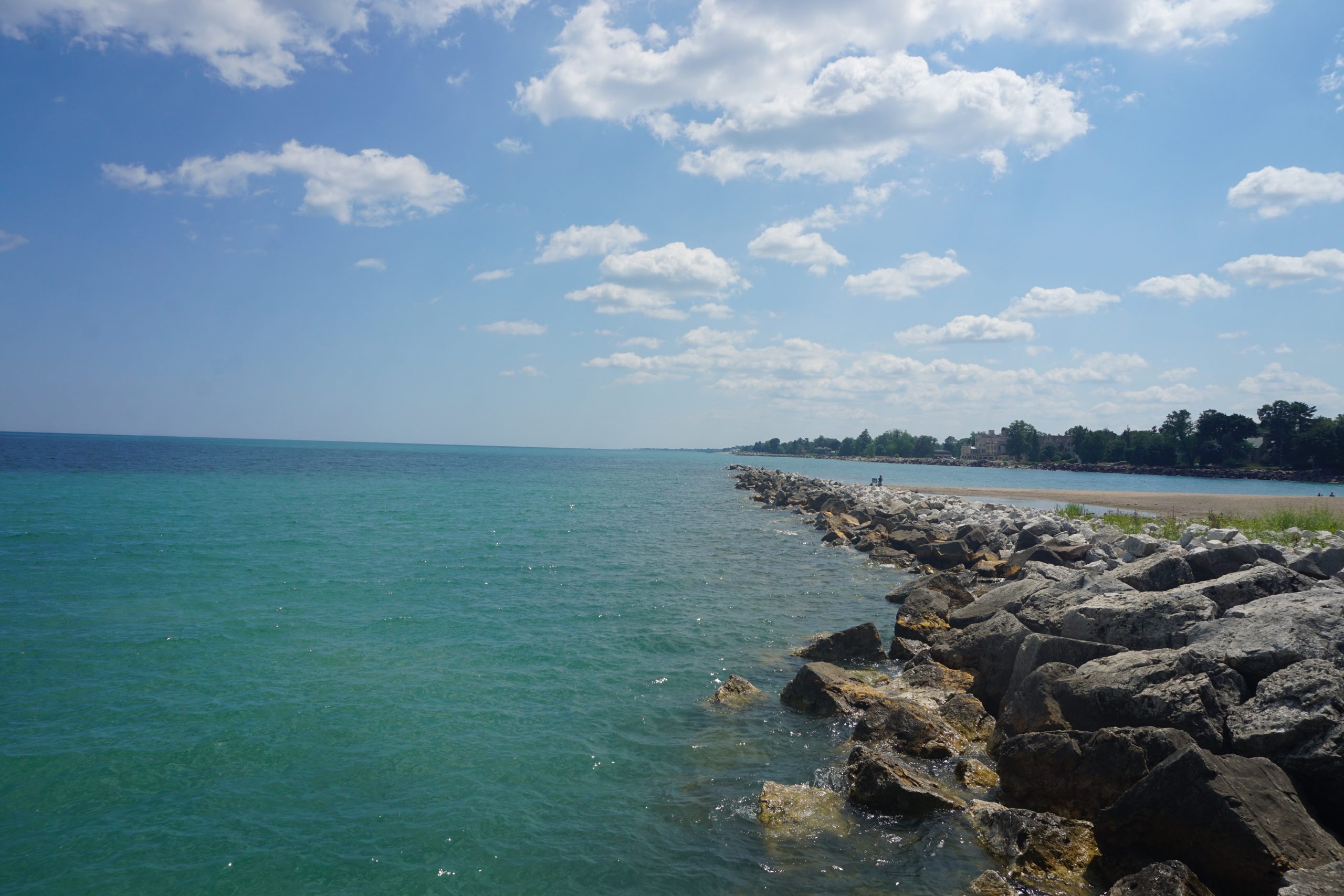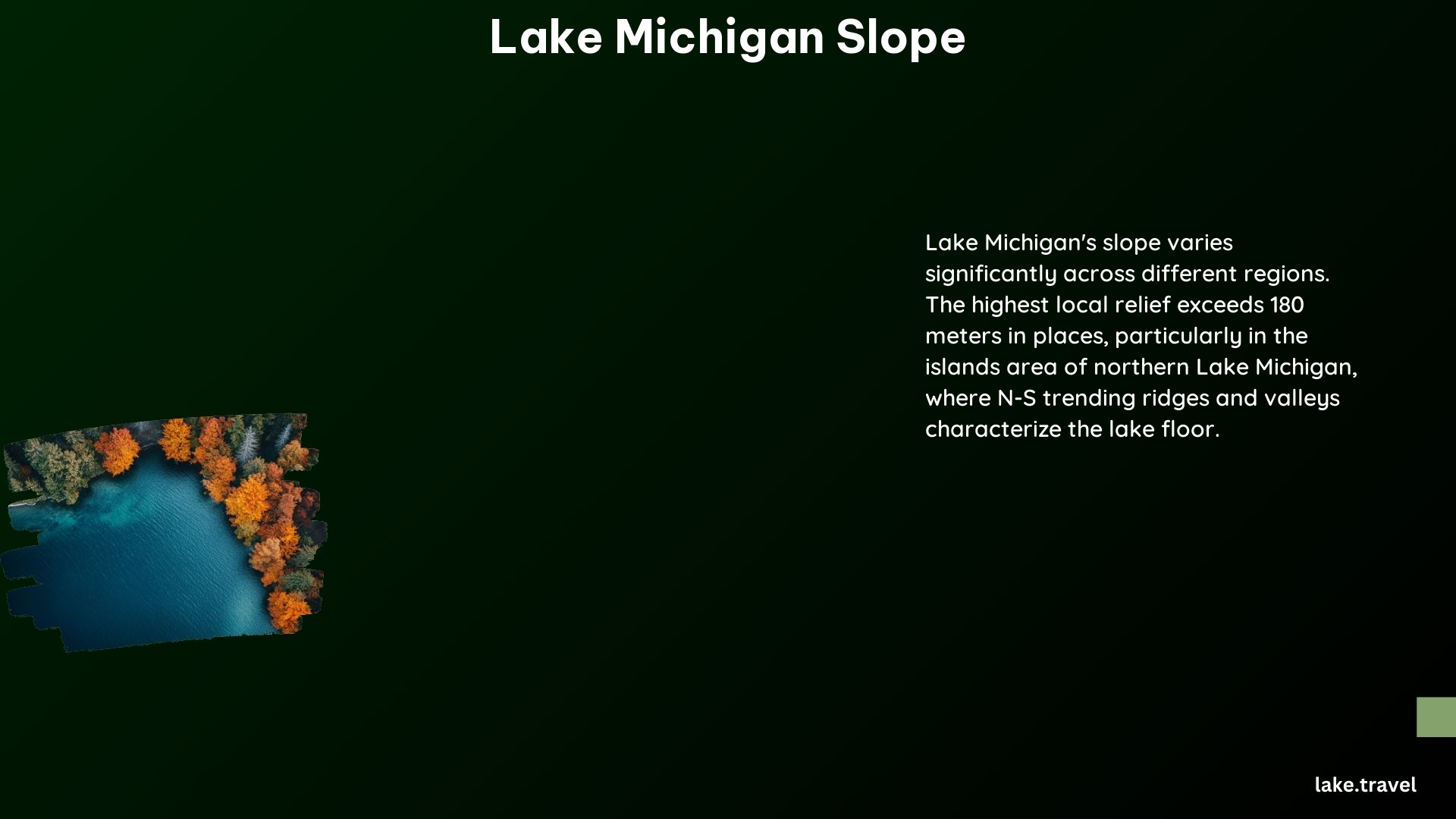Lake Michigan, the second-largest Great Lake by volume, is characterized by a diverse range of slopes along its shoreline. These slopes are shaped by a combination of geological processes, including glacial erosion and deposition, and are susceptible to erosion due to wave action and other environmental factors. In this blog post, we will explore the typical rate of lakebed erosion, the impact of wave erosion on coastal slopes, and measures that can be taken to stabilize these slopes.
Typical Rate of Lakebed Erosion

The rate of lakebed erosion on Lake Michigan’s shoreline varies depending on several factors, including the type of substrate, wave energy, and human activities. According to the National Oceanic and Atmospheric Administration (NOAA), the bathymetry of Lake Michigan reveals a complex topography shaped by glacial erosion and deposition. The lake floor features a series of ridges and valleys, with some areas exhibiting high local relief exceeding 180 meters.
Wave Erosion and Coastal Slopes

Wave erosion plays a significant role in shaping the coastal slopes of Lake Michigan. The lake’s shoreline is exposed to strong wave action, particularly during storms, which can cause erosion and destabilize the slopes. The steepness of the escarpments separating ridges from valleys can be attributed, in part, to the differences in resistance to erosion between hard strata and soft shales and redbeds.
Stabilizing Coastal Slopes
Several measures can be taken to stabilize coastal slopes on Lake Michigan:
- Surface Water Management: Eliminate surface water runoff by grading or re-grading the land, collecting runoff in storm sewers or private drain pipes, and minimizing the velocity of water flowing across coastal land.
- Groundwater Management: Minimize the amount of water in the ground by removing excess water from perched zones of saturation, which can cause soil instability.
- Vegetation: Planting vegetation is a simple and effective strategy to improve slope stability. Vegetation helps to hold the soil in place and reduce erosion.
- Toe Protection: Constructing toe protection, such as seawalls or revetments, can help to prevent erosion at the base of the slope.
- Reshaping Slopes: Reshaping slopes to a more gradual angle can improve stability, especially if there is sufficient space between buildings.
Case Study: 35-Degree Slope Profile with Anchoring
A recent project on Lake Michigan involved stabilizing a 35-degree slope profile using geocell panels, curved rebar “j-hooks,” and tendons. The geocell panels were filled with a topsoil/aggregate mixture and seeded with vegetation to further strengthen the system.
References
- NOAA. (n.d.). Lake Michigan Geomorphology – Bathymetry of Lake Michigan. Retrieved from https://www.ngdc.noaa.gov/mgg/greatlakes/lakemich_cdrom/html/geomorph.htm
- Flickr. (2013). Giant slope to Lake Superior, Log Slide area. Retrieved from https://www.flickr.com/photos/martinlabar/9362640621
- RutGuard. (2023). 35 Degree Slope Profile with Anchoring | Lake Michigan Bluff. Retrieved from https://rutguard.com/blogs/projects/35-degree-slope-profile-with-anchoring-project-in
- WanderWisdom. (2022). Lake Michigan Beach With Crazy Steep Climb Down Isn’t for the Faint of Heart. Retrieved from https://wanderwisdom.com/news/lake-michigan-steep-beach
- Leelanau County. (n.d.). Stabilizing Coastal Slopes on the Great Lakes. Retrieved from https://www.leelanau.gov/downloads/stablilizing_coastal_slopes_on_the_great_lakes.pdf
